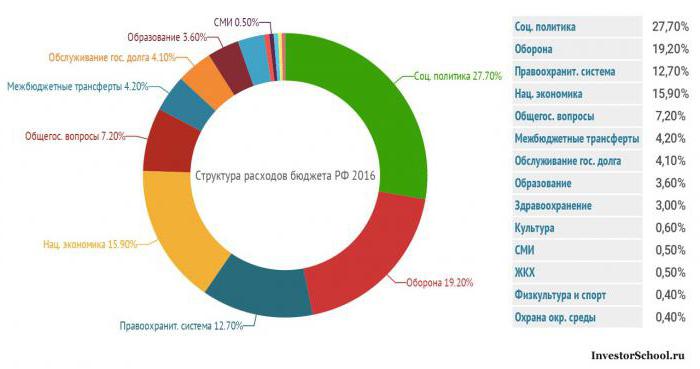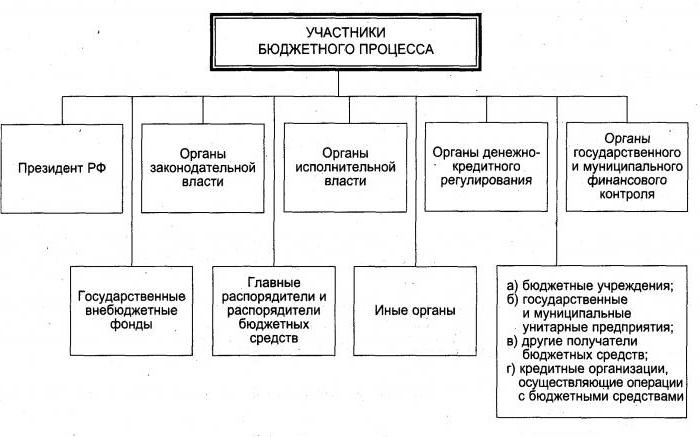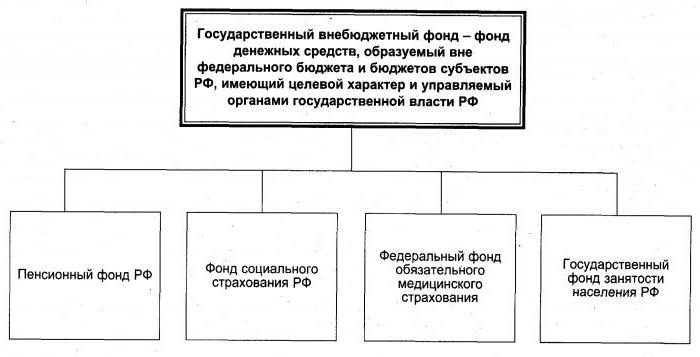The budget is the main financial document of the country, which reflects all items of income and expenses. The process of its preparation is the most important moment in organizing the work of the state economic sector. It depends on the budget how the people will live next year. An important element of this work are the participants in the budget process. It is about them that we will be talking.
What is a budget?
The budget refers to the main document that secures the totality of finances, according to which the links of state and municipal self-government work. Participants in the budget process carry out work on its formation. And their powers directly affect the final result. The future activities of not only the budget and financial system, but also the state as a whole, depend on how correctly the budget is drawn up. The country's main financial document determines how capable a country is in fulfilling its obligations to the people, providing budget services and ensuring social stability. The budget includes a combination of the following categories:
- tax fees;
- state loan;
- government spending.
The document is a link that combines all of the above financial positions. Since the budget determines the life of the state for next year, it is not surprising that it is approved at the Federal Assembly. This suggests that the draft budget is legally equivalent to the law.
In the economic sense, the document is a form that clearly demonstrates where the funds of the centralized fund will be spent and how it will be replenished. After budgeting, the distribution phase begins, when all the finances recorded in the document are divided between regions and sectors of the national economy. A more detailed procedure for the preparation and implementation of the document is prescribed in the Budget Code. The general right of the Russian Federation to an independent budget is also fixed there, and the participants in the budget process are also listed.
What is a budget process?
Budgeting is the coordinated work of various bodies. All participants in the budget process relate to any stages of the formation of the document. They can represent the interests of state power and local government. The participants in the budget process are working in accordance with the procedure regulated by the legislation of the Russian Federation. The preparation of the main financial document of the country includes the following actions:
- Drawing up and consideration of the draft budget.
- Statement.
- Execution of the project.
- Control over the implementation of the previous paragraph.
- Maintaining budget accounting.
- Formation of budget reporting.
This work, in which the participants in the budget process are involved, is aimed at finding all possible sources of replenishment of the state treasury, developing them and mobilizing them. The budget should be as accurate as possible so that in the future it is possible to calculate real income and expenses.

This process is aimed at the subsequent planning of the distribution of financial resources, their investment or preservation. Clarity and firmness allow you not to spend too much, because on the scale of the state one wrong decision will result in a loss of huge funds.
The budget process is fundamental in determining the direction of the relevant policy, which could implement the intended economic program. It consists in the optimal distribution of the available amount between different economic zones, budgets of different levels and areas of economic activity.
What is the principle of the participants?
To correctly determine the size of the budget, the ways of its formation, distribution and implementation, participants in the relevant process must adhere to certain principles. All work on the organization of the main financial document of the country is based on them.
In order to fully cover all the funds in the country, it is necessary to take into account the information provided by the territorial and local budgets. It is such a detailed analysis of the information that allows the most accurate calculation of the final number in the main financial document of the country.

All figures that are available in documents provided by local authorities must have reinforcement, on the basis of which the required amount of money will be allocated from the federal budget. That is, there must be socioeconomic reasons for receiving any funds from the state.
This process cannot be carried out by someone on their own. The life and development of the entire state depends on it, so it should be discussed and agreed upon by the participants. The adoption of a single decision completes each stage of the budget process. This clause is defined by the Code as publicity and publicity.
At any level in the formation of the document, a single classification is taken as the basis. This is necessary for the uniformity of this action and the absence of disagreement.
The document is drawn up only for a certain period of time, which is usually one calendar year. This is necessary so that the information provided from all bodies is up-to-date and at the same time be periodic.
This form of education and cash flow reflects the socio-economic policy that the President of the Russian Federation plans to adhere to.
What are the stages of activity?
Before starting the budget process itself, it is necessary to carry out a number of preparatory operations, which include analyzing the current state of the socio-economic sphere. Based on it, a forecast is made on how realistic it is to perform certain tasks. Everything is under consideration - from the work of municipal institutions to the sectors of the national economy. The data obtained and the balance of available resources are combined into a long-term financial plan. It is that base, guided by which, local governments draw up their proposed budget projects. An important point in this line is regulation, the task of which is to allocate the share of funds that is set for a particular level.

At the federal level, the process of forming the country's main economic document begins with the preparation of a project base, which is then reviewed and approved. During the year, all those actions are implemented, the financing of which is provided for by the expenditure and income scheme. At the end, a progress report is compiled, which is analyzed to highlight and eliminate the mistakes made.
Which actors are involved in the process?
Participants in the budget process are the relevant entities whose work is directly related to this procedure, i.e., authorized bodies. Their rights and obligations are enshrined in the Budget Code of the Russian Federation. But not all participants trace the formation of the country's main financial document, many only relate to certain stages. From this, their role does not become less significant.Depending on what the activities of the participants are focused on, three categories of subjects of this process can be distinguished:
- the formation of the financial sector;
- monetary regulation;
- bodies controlling the embezzlement of state property.
The first paragraph refers directly to the Ministry of Finance, both of the Russian Federation and the republics. This also includes financial departments of municipal administrations.
The second category is the main financial institution of the country of the first level - the Central Bank of Russia.
The last item is represented by those bodies that carry out the budget process at its last stage, that is, control the clarity of the execution of the requirements of the main financial document of the country. These include the Accounts Chamber, control and financial executive authorities, as well as regional and local representative offices.
Other entities have similar powers. They differ from the previous ones by the results of work of federal significance. These are entities that have certain positions (for example, the President of the Russian Federation) or are representatives of other groups. The latter include all deputies of the State Duma. Members of the Government and the Federation Council have such powers. But most of the bodies have a profile directly related to financial activities. The budget process is impossible without the Treasury, fiscal authorities, the Accounts Chamber. Representatives of the State extra-budgetary funds, as well as finance managers, make their word in budgeting.

In addition to those individuals who make up the budget and form the funds for implementation, there are other participants in this process. These are those subjects, in relation to the requests of which, a scheme of expenses and incomes is formed. These include institutions whose work is carried out at the expense of state funds.
The work of all participants in the process has a different direction. According to this classification criterion, subjects are divided into two categories - legislative and executive. The activity of the former is to develop the necessary regulatory framework through the issuance of relevant laws. Another function assigned to them is to control and verify the flow of allocated funds. The second category of participants is committed to bringing the ideas of the first to life, that is, engaged in project activities. They constitute an indicative example of the scheme of income and expenses and, after discussion, approve it.
Why do we need to keep track of the subjects of the process?
The register of participants in the budget process consolidates information about all recipients of public funds. This list is one of those information resources that supply data for the formation of the main financial document of the country. But not only the register of participants in the budget process is the very source. In addition to it, the following elements can be distinguished:
- a systematization form fixing lists of industry and departmental municipal services;
- a base that includes all sources of budget process revenue;
- a register consisting of contracts that specify a subsidy provided to individuals and legal entities;
- list of buildings and structures owned by the state;
- list of bank guarantees;
- accounting form of contracts that were concluded by customers;
- a list of banking organizations endowed with sufficient authority to accept bank guarantees for tax purposes;
- table of codes that are responsible for profit and costs.

What items are part of the consolidated registry?
The consolidated register of participants in the budget process is an orderly structure from which information is taken at various stages of the formation of the state revenue and expenditure scheme. This database consistently sets out data on two categories of subjects. These are participants and non-participants in the budget process.
And if everything is very clear with the first, then what is the second subspecies? This includes those formations that operate on a state basis, but are autonomous and budgetary. Also, a legal entity that is not a participant in the budget process is a unitary enterprise. The difference between such enterprises is that they are recipients of subsidies. The latter, in turn, are allocated from the budget at the appropriate level.
The register of participants and non-participants in the budget process includes another form of relevant entities. Unitary enterprises can also be attributed to them, but which are endowed with the rights of the state customer. This is necessary so that the organization has the opportunity to implement municipal contracts. The consolidated register of participants and non-participants in the budget process provides for other forms of expression of the subjects of the process for drafting the main financial document of the country.
How is the formation of information resources of the budget process?
You can understand the purpose and effectiveness of this structure by the example of a state task. For each such project, an appropriate form is drawn up, which includes:
- Information about the enterprise or institution on whose shoulders the task falls. This is exactly where the consolidated register of participants in the budget process comes to the rescue. The case can be assigned to both the subjects of this action and legal entities that are not related to it. This paragraph prescribes the name of the organization and the scope of its activities.
- Unique state order number. Also in this paragraph the name of the task itself and its features is prescribed.
- Quality indicators. These are the results and the set values that the work should correspond to, and which are subsequently evaluated.
- Normative legal acts according to which tariffing of the provided service is carried out.
- The procedure for the provision of public services.
- Additional data on the state order.

Why does each participant need their own number?
To make the process of allocating finances more organized, each entity is assigned a code on the register of participants in the budget process. It is eight digits, according to which it is possible to clearly identify whether the requested organization is a participant, or is it a legal entity that is not endowed with such powers. The code of the consolidated register of participants in the budget process allows you to find out the necessary information about the institution. Data is freely available.
Why did you need the formation of the "Electronic Budget"?
To simplify the search system, the government introduced a project to form the Consolidated Register of the Electronic Budget System. Thanks to him, it has become much easier to identify a budget institution. Whether it is a participant in the budget process or not, this is also recorded in the system. In an age of active development of information technology, it was simply impossible not to automate this process.
The project is designed to facilitate the work of financial authorities at all levels. "Electronic budget" is intended to consolidate relevant information that must comply with the registry. Since this year, the details of the required fields in the documents of the Federal Treasury have undergone a change. The code on the register of participants in the budget process, which increased from five digits to eight, also fell under this rule.
This system has a lot of advantages compared to the process of working without a computer. Firstly, you do not need to fill in the details for each organization manually. The information system automatically enters the participant code of the budget process. How to find out the data from the corresponding directories will now also not be a problem, because the program automatically synchronizes them with the directories of the Electronic Budget system. Applications for changing organizations are also generated automatically and data on the institution is immediately filled. But the main advantage of computerization is the full compliance of the Electronic Budget and the Consolidated Register. Now, the question “how to find out whether the consolidated register of participants in the budget process includes information about the institution or not” can be answered with confidence.
How is the registry maintained?
To add a municipal institution to the base, the Federal Treasury forms a draft application. Then, the organization with the appropriate authority should fill out the form. After that, the Federal Treasury is directly involved in creating the registry entry itself, and also sets up automatic data changes if necessary.
At the design stage, verification, adjustment and data entry are performed. This is preceded by the formation of an application for inclusion of information.
Then comes the process of internal coordination. The actors at this stage are: the contractor, approving and approving.

The application is tested within five business days after approval. In the event that the result is negative, a second internal coordination occurs, after which a unique number is assigned to the protocol.
If the verification was successful, then, as in the previous case, internal coordination takes place. After this entry, a unique code is assigned. The next step is to generate a notice and also assign a unique number. At the end of the procedure, the data is placed in the Electronic Budget system.